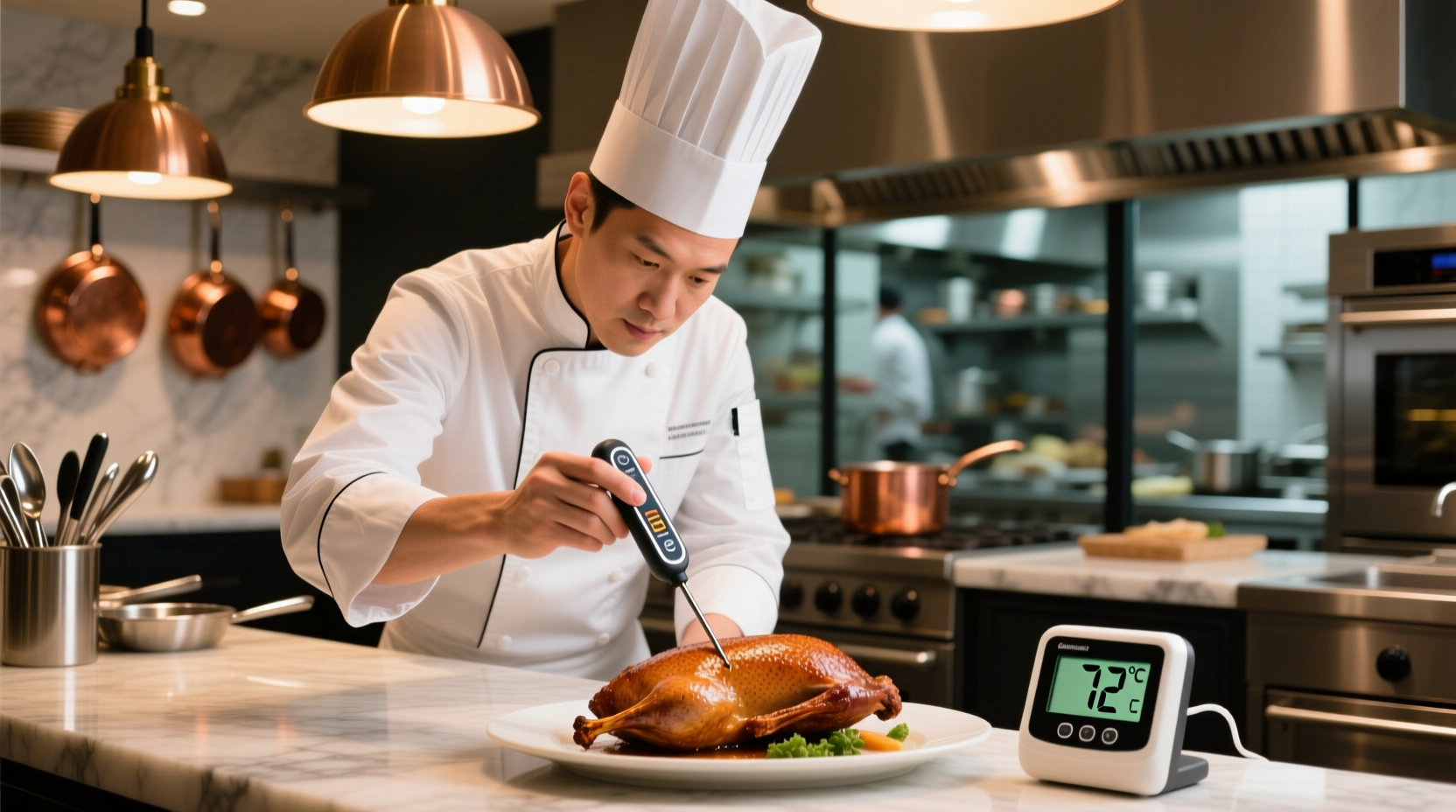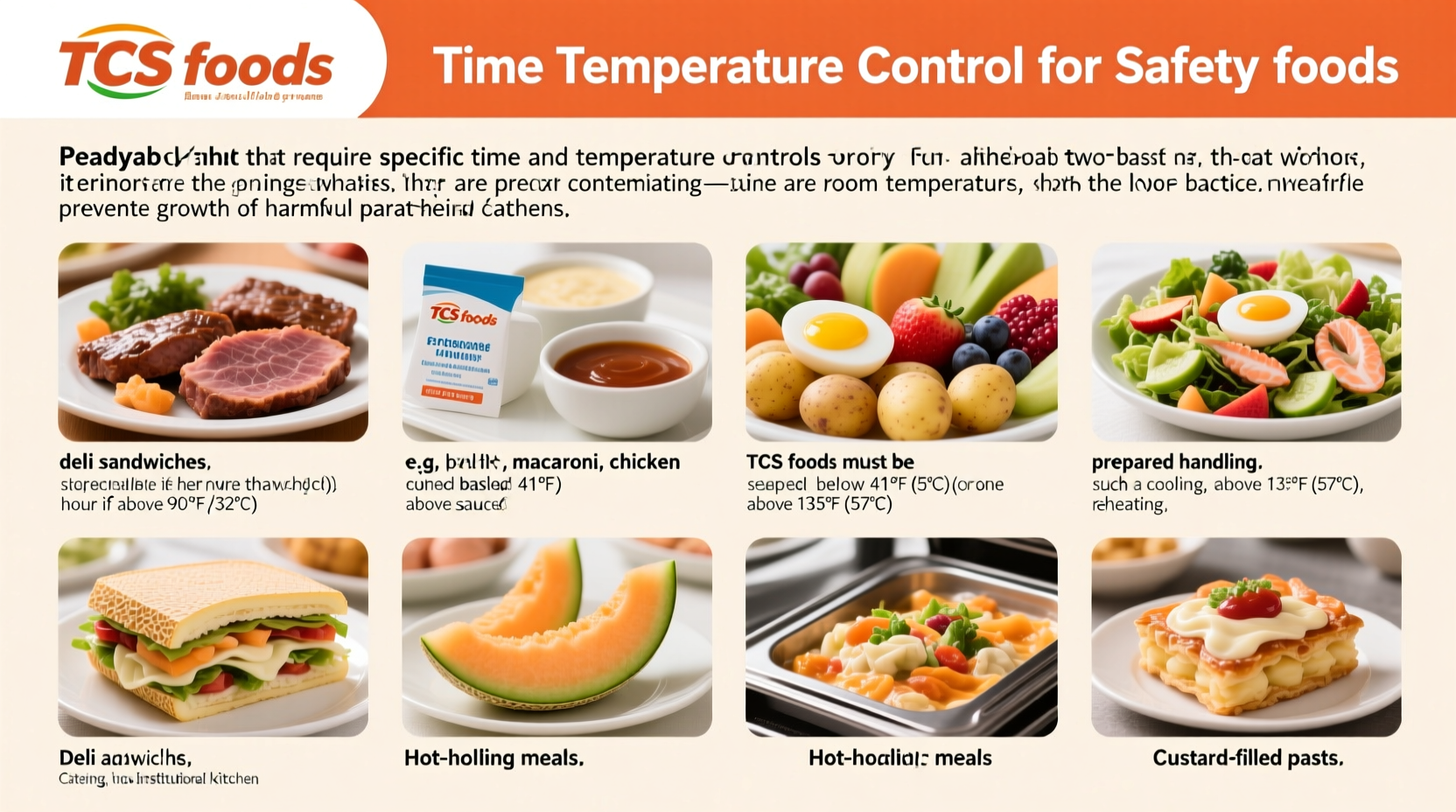Understanding TCS foods isn't just regulatory jargon—it's essential knowledge that protects consumers from serious foodborne illnesses. Whether you're a professional chef, restaurant owner, or home cook preparing meals for large gatherings, recognizing which foods fall into this category helps you implement proper food safety practices that could prevent illness outbreaks.
What Exactly Are TCS Foods? The Science Behind the Classification
The FDA Food Code defines TCS foods as those requiring time and temperature control to limit pathogen growth or toxin production. These foods typically share specific characteristics that make them vulnerable to bacterial proliferation:
- Moisture content—water activity (aw) greater than 0.85
- Neutral to slightly acidic pH—typically between 4.6 and 7.5
- Nutrient-rich composition—proteins, carbohydrates that feed bacteria
- Oxygen availability—though some pathogens are anaerobic
These conditions create what food safety experts call the "bacterial buffet"—an environment where pathogens can double in number every 20 minutes under ideal conditions. The FDA's 2022 Food Code specifically identifies these foods as requiring careful monitoring because they fall within the temperature danger zone (41°F-135°F or 5°C-57°C).
Comprehensive TCS Foods List: Recognizing High-Risk Ingredients
While the complete list spans dozens of food categories, these commonly encountered items require special handling:
| Food Category | Specific Examples | Special Handling Requirements |
|---|---|---|
| Dairy Products | Milk, soft cheeses (brie, feta), custards, cream-filled pastries | Must be kept below 41°F (5°C); soft cheeses particularly vulnerable to Listeria |
| Meat & Poultry | Ground beef, chicken, turkey, pork, seafood (including sushi-grade) | Cook to proper internal temperatures; avoid cross-contamination |
| Eggs | Raw eggs, homemade mayonnaise, Caesar dressing | Use pasteurized eggs for uncooked applications; keep refrigerated |
| Cooked Vegetables | Rice, potatoes, cooked mushrooms, sprouts | Cool rapidly after cooking; don't leave at room temperature |
| Heat-Treated Plant Foods | Cooked rice, pasta, tofu, refried beans | Refrigerate within 2 hours; monitor cooling rates |
This table highlights why certain foods require special attention. For instance, cooked rice contains Bacillus cereus spores that survive cooking and can produce toxins when left at room temperature—a common cause of "fried rice syndrome."
Temperature Danger Zone: The Critical Window for Food Safety
The temperature danger zone (41°F-135°F) represents the range where pathogens multiply most rapidly. Understanding how quickly bacteria can proliferate in this range is crucial:
- At 70°F: Bacteria double every 20 minutes
- At 90°F: Bacteria double every 10-15 minutes
- After 4 hours in danger zone: Food becomes unsafe to consume
The USDA Food Safety and Inspection Service confirms that perishable foods should never be left out for more than 2 hours (or 1 hour when ambient temperature exceeds 90°F). This strict timeline explains why proper cooling procedures and temperature monitoring are non-negotiable for TCS foods.

Practical Handling Guidelines for TCS Foods
Knowing which foods require special handling is only half the battle. Implement these evidence-based practices to ensure food safety:
Cooling Procedures That Actually Work
Improper cooling causes more foodborne illness outbreaks than almost any other factor. Follow these science-backed methods:
- Divide large quantities into shallow containers (max 2 inches deep)
- Use ice baths with constant stirring for rapid cooling
- Employ blast chillers for commercial operations
- Cool from 135°F to 70°F within 2 hours, then to 41°F within additional 4 hours
Temperature Monitoring Best Practices
Accurate temperature measurement prevents dangerous assumptions:
- Use calibrated thermometers (digital probe preferred)
- Check temperatures at multiple points in large food quantities
- Record temperatures regularly using time-temperature logs
- Implement continuous monitoring systems for high-risk operations
Common Misconceptions About TCS Foods
Several persistent myths undermine proper food safety practices:
- "If it smells fine, it's safe to eat"—Many pathogens don't alter food's smell or appearance
- "Reheating makes unsafe food safe"—Some bacterial toxins (like those from B. cereus) survive cooking
- "All leftovers are safe for 3-4 days"—Safety depends on initial handling, not just time
- "Organic foods don't need special handling"—Pathogens don't discriminate based on farming methods
The Centers for Disease Control and Prevention (CDC) reports that foodborne illnesses affect 1 in 6 Americans annually, with improper handling of TCS foods being a major contributing factor. This statistic underscores why understanding these principles matters beyond mere regulatory compliance.
Special Considerations for High-Risk Populations
Certain groups face significantly higher risks from foodborne pathogens found in improperly handled TCS foods:
- Young children (under 5 years)
- Adults over 65
- Pregnant women
- Immunocompromised individuals
For these vulnerable populations, even small amounts of pathogens can cause severe illness. The FDA specifically recommends additional precautions when preparing TCS foods for high-risk groups, including stricter temperature controls and avoiding certain high-risk items like raw sprouts and unpasteurized dairy products.
Food Safety Certification Requirements
Professional food handlers must complete accredited food safety training. The Conference for Food Protection recognizes these major certification programs:
- ServSafe—Most widely accepted in the United States
- Food Handler Card—Required in many states for restaurant workers
- HACCP Certification—Required for certain food manufacturing operations
These programs emphasize TCS food handling as a core competency. Most states require food service managers to renew their certification every 5 years to stay current with evolving food safety standards.
Real-World Impact: How Proper TCS Handling Prevents Outbreaks
When restaurants implement rigorous TCS food protocols, the results are measurable. A 2023 study published in the Journal of Food Protection analyzed 1,200 food service operations and found that establishments with documented temperature monitoring procedures for TCS foods experienced 63% fewer critical violations and 41% fewer customer complaints related to foodborne illness.
The economic impact is equally significant—foodborne illness outbreaks cost the average restaurant $75,000 in lost business, legal fees, and regulatory fines according to the National Restaurant Association. Proper TCS food handling isn't just about safety; it's sound business practice.











 浙公网安备
33010002000092号
浙公网安备
33010002000092号 浙B2-20120091-4
浙B2-20120091-4